Monthly Market Report: November 2022
Markets Rally in November
Prepared by Brandon Yee, CFA, CAIA, and Thomas Connelly, CFA, CFP
DEVELOPED MARKETS
International Developed Markets Rebound
In the month of November, international developed stock markets returned 10.65%. Pacific ex Japan and Europe ex UK recorded returns of 14.66% and 11.54%, respectively. The U.S. and Canada lagged other markets. International developed markets are down -13.87% YTD while the U.S. market is down -14.8%. Developed markets in Europe and Asia have outperformed the US market based on local currency returns; the strength of the US dollar has strongly penalized market returns outside the U.S. this year.
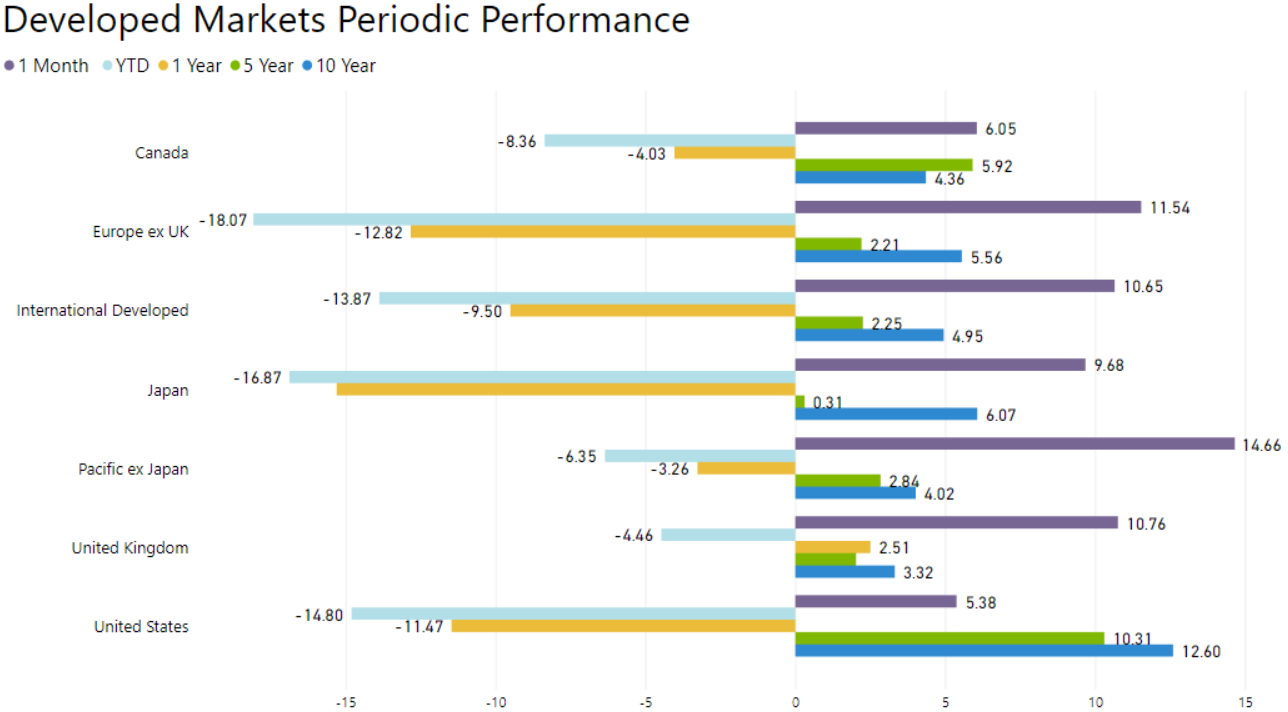
Emerging Market Rally Led by China
Broader emerging markets posted a 14.03% return for the month. China and Korea recorded returns of 29.71% and 14.95%, respectively. Brazil and Mexico lagged other markets in November. Countries that export natural resources, such as Brazil, have benefited from this year’s inflationary environment. High local interest rates, energy and food prices have been headwinds to emerging market economies. China’s zero-Covid policy has also been a drag on economic activity this year, but China may relax their policy amidst nationwide protests.
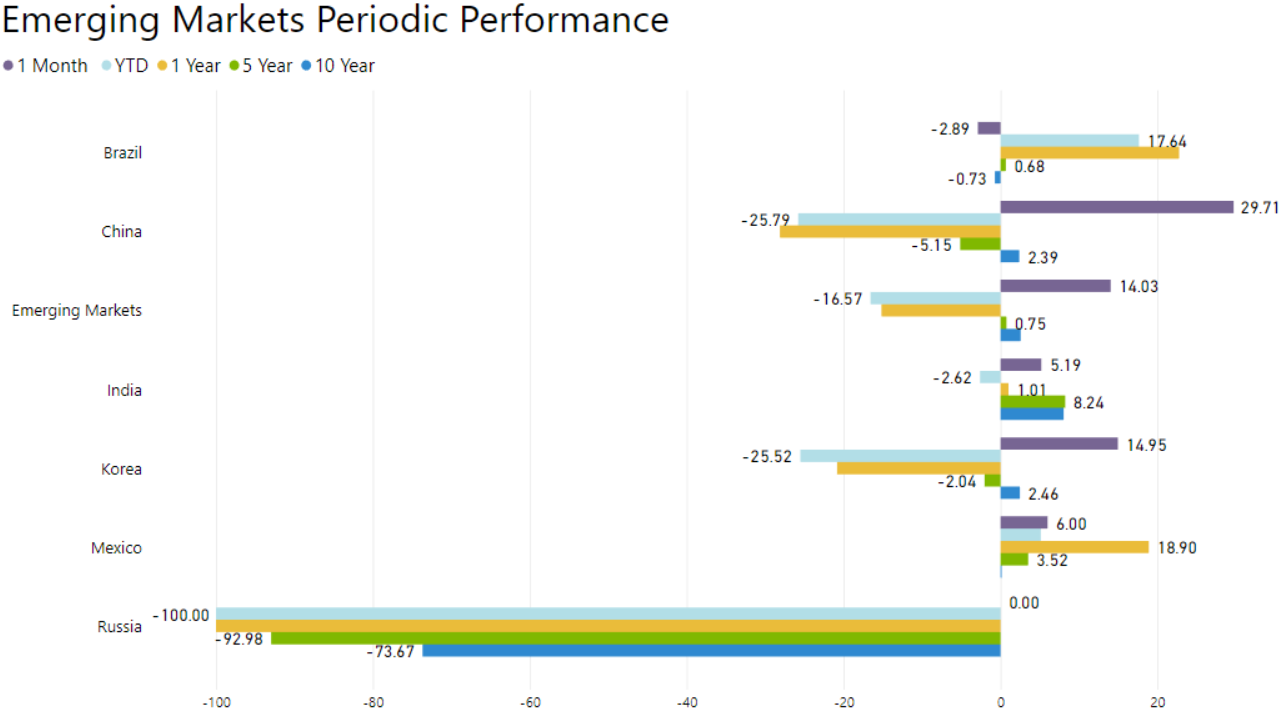
Materials and Financials Sectors Holding Up Well
Materials and financials recorded returns of 15.56% and 9.65%, respectively, in November. Energy and healthcare lagged other sectors this month. The energy sector remains up 52.32% YTD and 58.34% over the past year. Global oil and gas supply and demand dynamics will most likely continue to be favorable in the short and medium term.
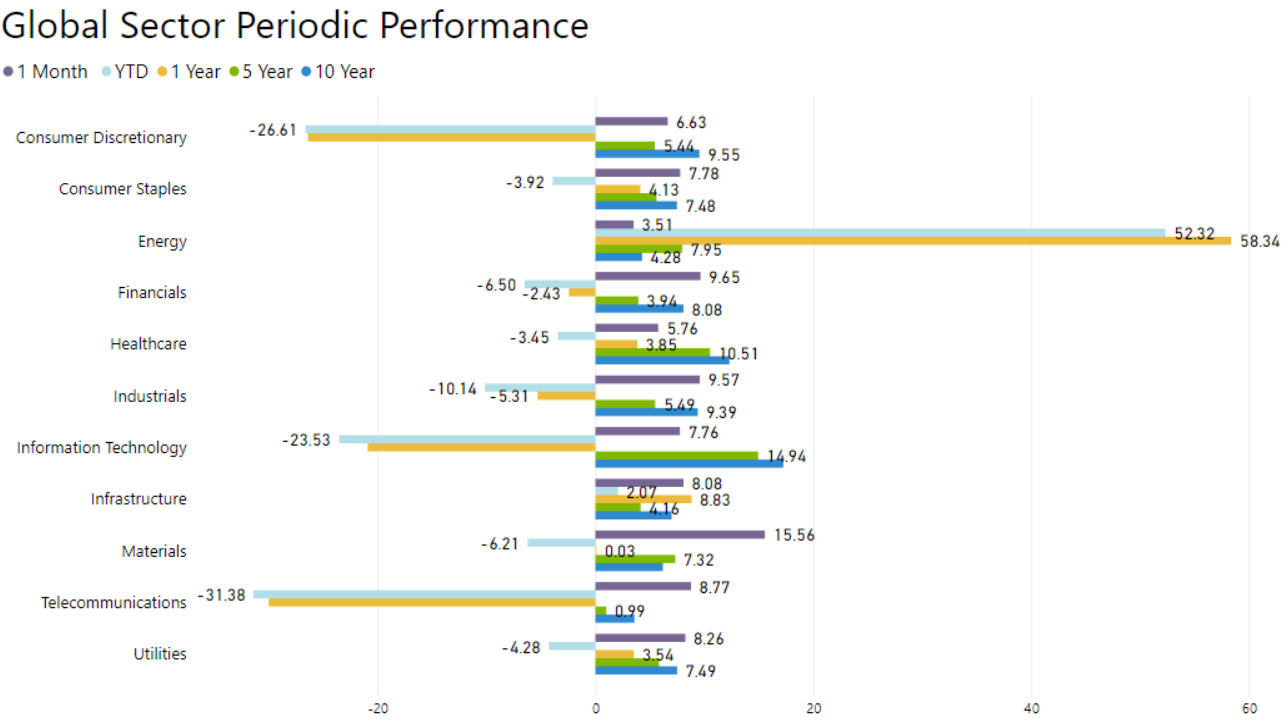
Value Increases Edge in 2022
In November, value outperformed growth in the large-cap space and small-cap space. Momentum recorded a return of 3.85%. Value stocks are materially outperforming growth stocks in 2022. Their ten-year annualized returns are approaching growth’s ten-year return. Even after value’s strong performance, value stocks are still not expensive relative to growth stocks. Value-oriented sectors such as energy, financials, and materials may still have much more room to run.
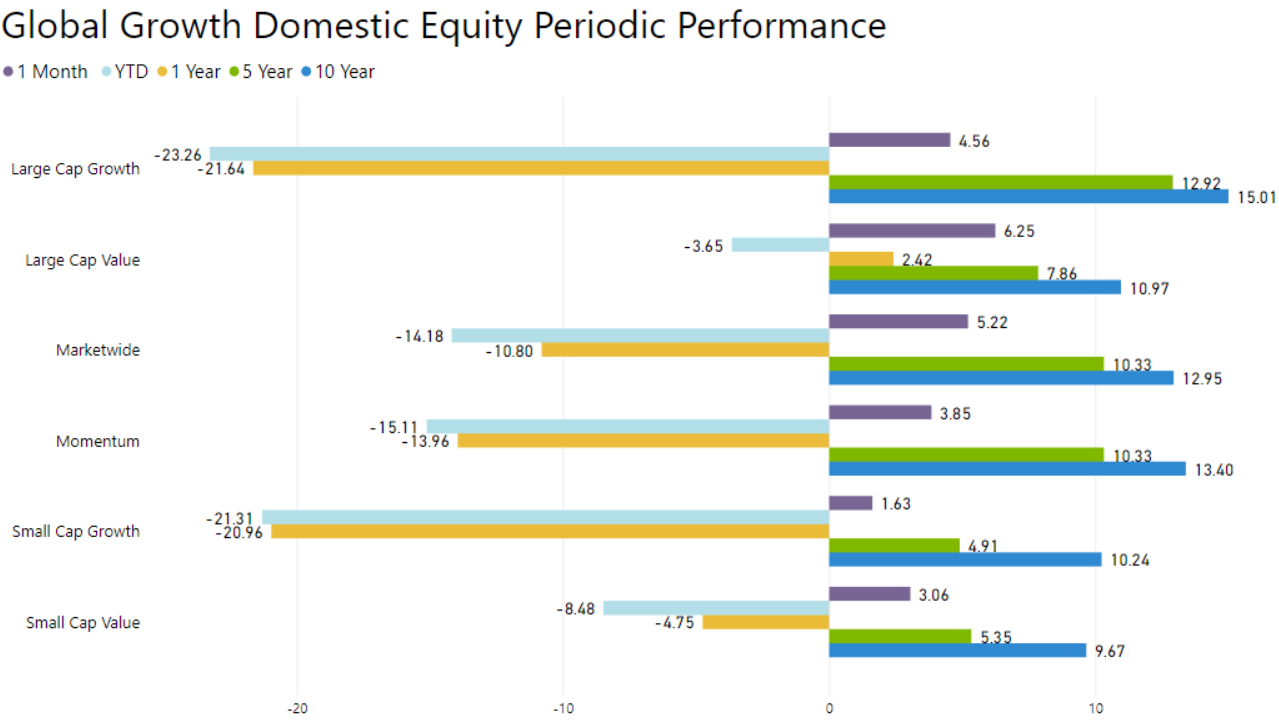
Growth Outperforms in the International Markets
In the international developed markets, value underperformed growth in the large-cap and small-cap space for the month. Momentum recorded a return of 8.92% while small-cap emerging market stocks posted a return of 10.29%. Valuations of value stocks are still very low relative to growth stocks in both international developed and emerging markets, which is consistent with the US market. Rising interest rates may also pose more of a risk to growth stocks than value stocks.
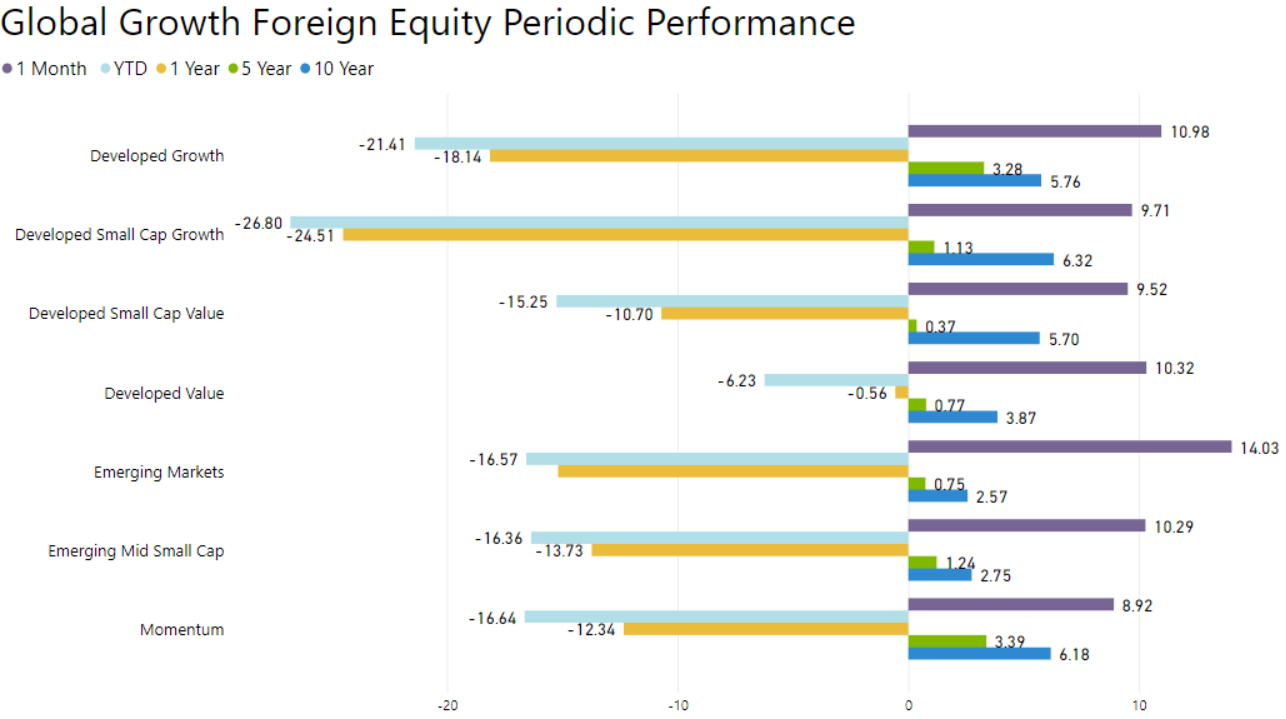
Short-Term Interest Rates Rise
In November, the three-month Treasury bill index returned 0.32%. From the beginning of the year through the end of November, the interest rate on the 90-day Treasury bill increased from 0.08% to 4.37%. Savers are now getting paid much more in interest; however, they will still face low real interest rates if inflation remains high, which has compromised purchasing power despite the increase in rates. The CPI has increased by 7.76% over the past year through the end of October.
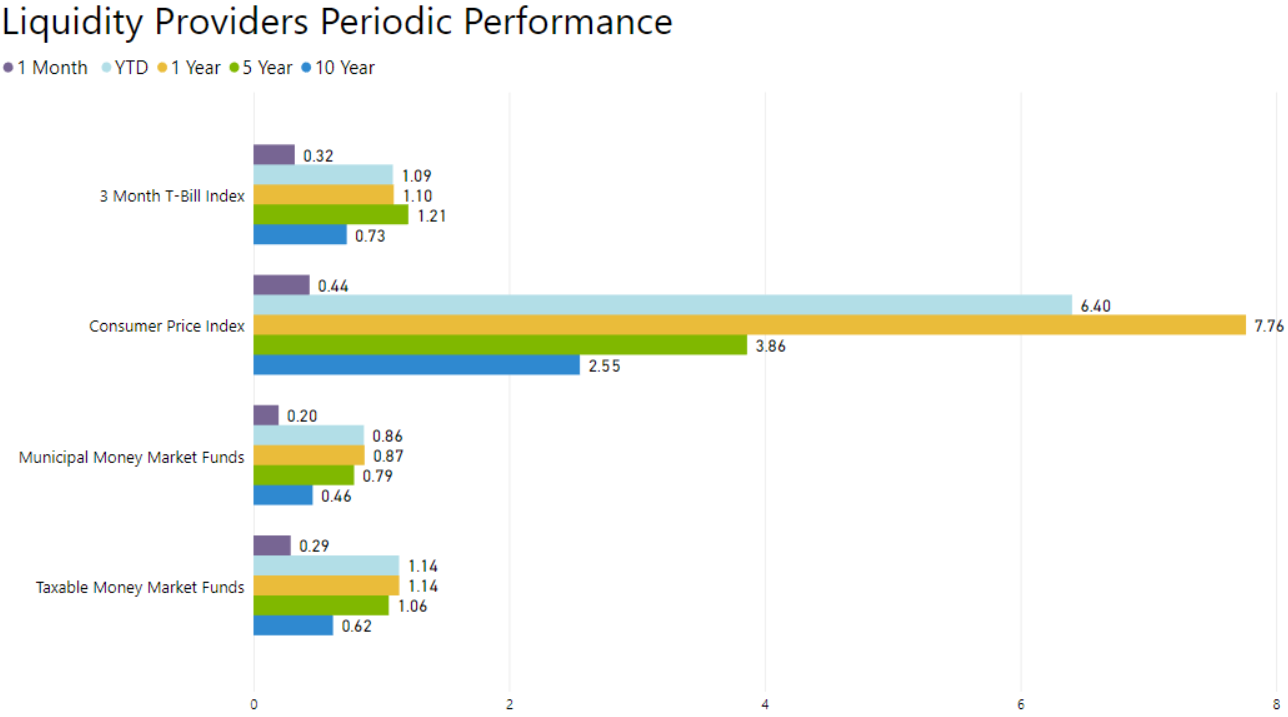
Fixed Income Investments Rally
The returns of deflationary hedges were positive for the month. The Bloomberg Barclays U.S. Agg Bond Index returned 3.68% for the month. High-yield bonds are down -10.54% YTD. During the first half of the year, longer maturities were penalized when interest rates rose; during the third quarter the credit aspect of fixed income declined due to increasing recessionary expectations. If interest rates continue to rise, less creditworthy borrowers may face difficulties meeting their financial obligations. This year, fixed income investments have failed to protect investors’ portfolios.
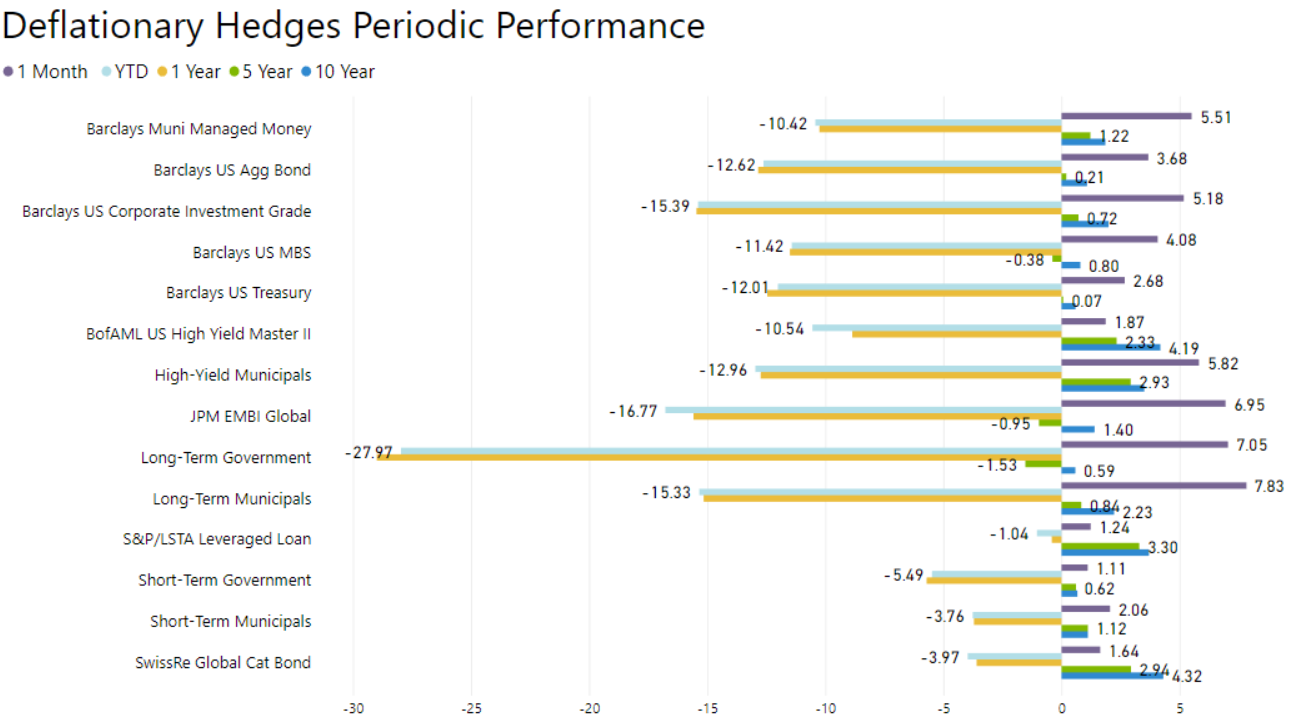
Commodity Markets Rebound in November
Inflation-sensitive investment returns were mostly positive for the month. Infrastructure and international real estate returned 8.08% and 7.84%, respectively, in November. The Bloomberg Commodity index posted a return of 2.74%. Gold bullion is only down -2.90% YTD after the Federal Reserve suggested a slower pace of interest rate hikes going forward. The US dollar has materially strengthened this year, moderating gold’s return in US dollar terms. However, gold bullion is up much more relative to other major currencies. Like oil’s future supply prospects, the future supply of gold may be constrained as exploration and capital expenditures have only slightly increased this year.
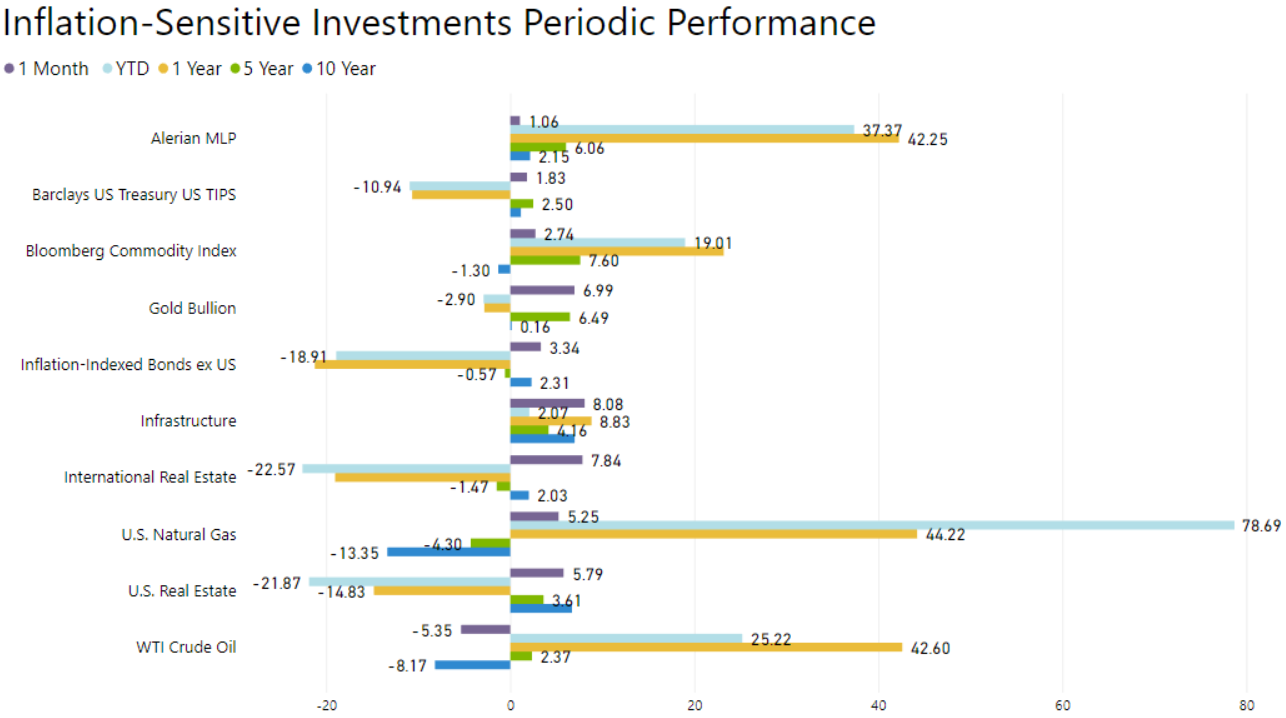
U.S. Dollar Mixed Versus Other Currencies
Over the past three months, the U.S. dollar appreciated against the Australian dollar, Canadian dollar, and Chinese yuan. The U.S. dollar depreciated against the Euro, Japanese Yen, and British Pound. However, the continuation of U.S. fiscal deficits may weigh on the U.S. dollar in the medium-term to long-term. Gross federal debt to GDP stands at 121% and is forecasted to increase through the decade.
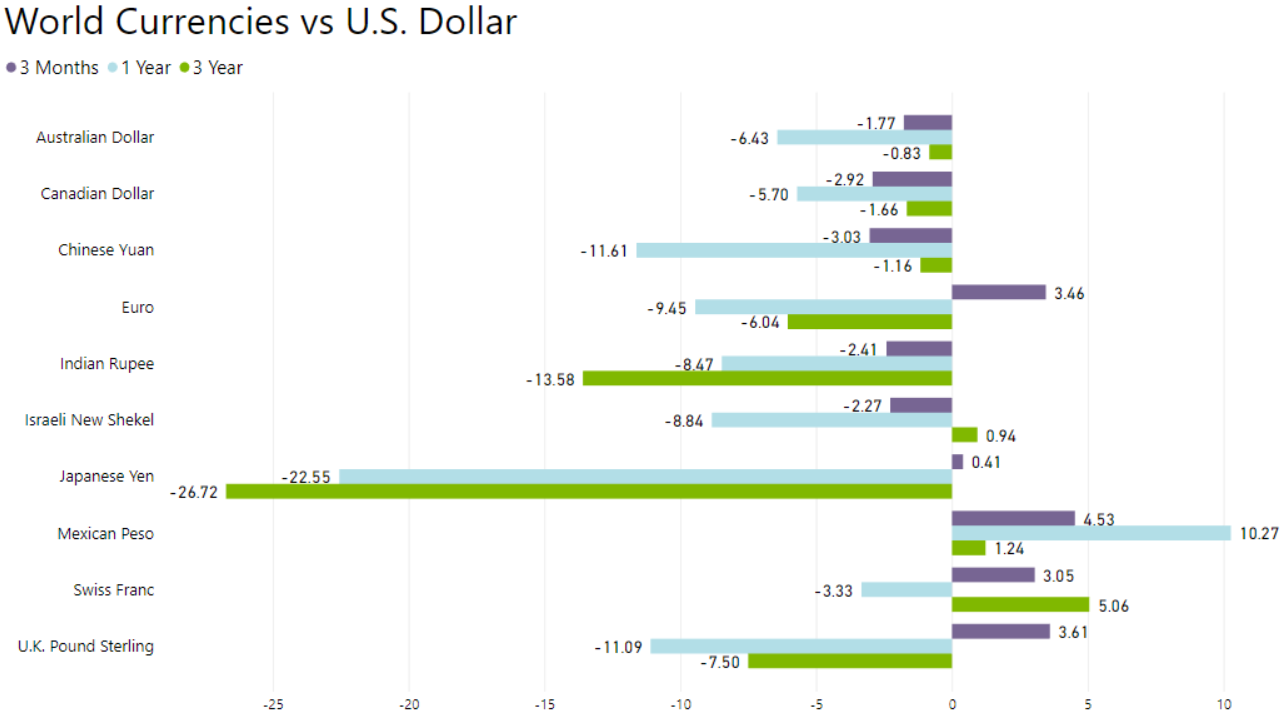

Brandon Yee, CFA, CAIA – Senior Research Analyst
Brandon conducts investment due diligence for Versant Capital Management, and designs and implements tools and processes to support the firm’s research. His background in biology and finance help him to look at challenges from multiple angles, resulting in unique and well-rounded approaches and solutions.
Please remember that past performance may not be indicative of future results. Different types of investments involve varying degrees of risk, and there can be no assurance that the future performance of any specific investment, investment strategy, or product (including the investments and/or investment strategies recommended or undertaken by Versant Capital Management, Inc.), or any non-investment related content, made reference to directly or indirectly in this article will be profitable, equal any corresponding indicated historical performance level(s), be suitable for your portfolio or individual situation, or prove successful. Due to various factors, including changing market conditions and/or applicable laws, the content may no longer be reflective of current opinions or positions. Moreover, you should not assume that any discussion or information contained in this article serves as the receipt of, or as a substitute for, personalized investment advice from Versant Capital Management, Inc. To the extent that a reader has any questions regarding the applicability of any specific issue discussed above to his/her individual situation, he/she is encouraged to consult with the professional advisor of his/her choosing. Versant Capital Management, Inc. is neither a law firm nor a certified public accounting firm and no portion of the article content should be construed as legal or accounting advice. If you are a Versant Capital Management, Inc. client, please remember to contact Versant Capital Management, Inc., in writing, if there are any changes in your personal/financial situation or investment objectives for the purpose of reviewing/evaluating/revising our previous recommendations and/or services. A copy of the Versant Capital Management, Inc.’s current written disclosure statement discussing our advisory services and fees is available upon request.
